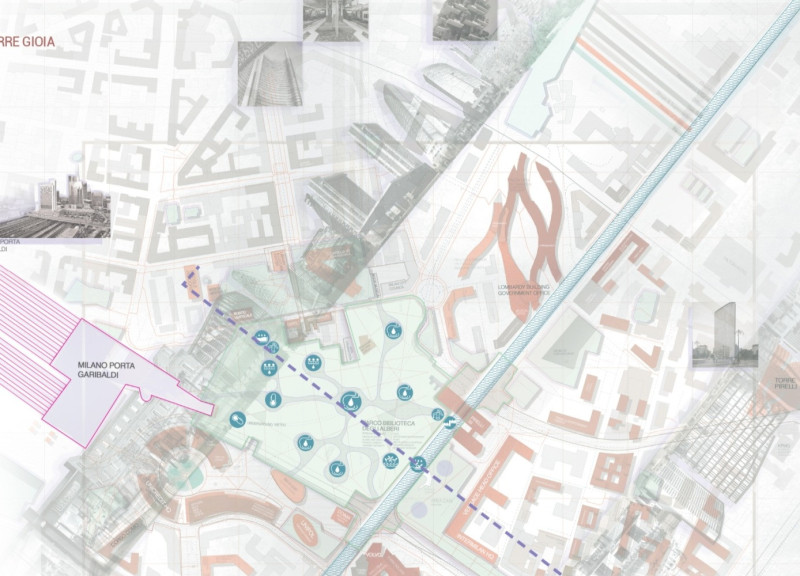5 key facts about this project
Rinascimento in Blu reimagines the urban landscape of Milan by integrating architecture and ecological systems centered around water. Located strategically between the Milano Centrale and Milano Porta Garibaldi train stations, the project aims to address the increasing challenges of urban density and rising temperatures. The overarching design concept seeks to enhance the city's socioecological fabric while promoting resilience and sustainability in response to environmental demands.
Design Framework
At the heart of Rinascimento in Blu is the idea of a networked urban ecology, which emphasizes the interdependence of human activity and natural systems. The approach takes direct action against the Urban Heat Island (UHI) Effect, utilizing both localized and broader city-wide strategies. Innovative water management and integrated landscape architecture play key roles in effectively addressing climate challenges while improving the urban experience.
Cooling Solutions
Engineered cooling devices form a significant part of the design, employing techniques such as evaporative cooling and natural ventilation. These features create shaded areas and enhance airflow throughout the space, making it more comfortable for users. This focus on thermal management not only addresses heat but also encourages outdoor activities and ecological sustainability.
Water Management
The design includes multi-scalar water management systems that support environmental health and urban function. Components like biofiltration systems, wetland parks, and bioswales work together to improve water quality and manage stormwater runoff. These elements highlight the need to incorporate hydrological processes into urban design, promoting a sustainable approach to managing water resources.
Public Connectivity
Rinascimento in Blu places importance on connectivity through lively public spaces that encourage social interaction. The integration of green-blue infrastructure strengthens the city's ecological framework while enhancing community engagement. By creating accessible, multifunctional areas for people to gather, the design supports varied uses and overall well-being, establishing a welcoming atmosphere for residents and visitors alike.
The innovative use of the Naviglio Canal as a central feature underscores the commitment to rejuvenating historical waterways within a modern context. This approach emphasizes the role of water management in building resilient urban communities, while enhancing the experience of navigating the city.






















































